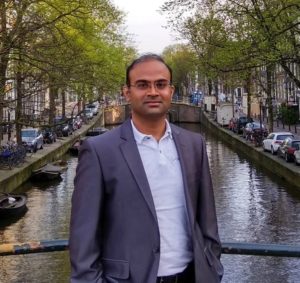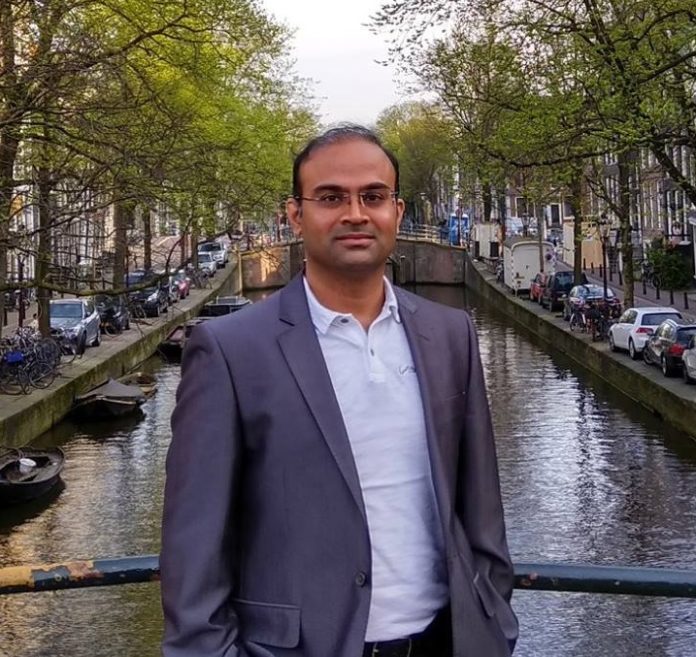Techolution Pvt Ltd is a Newyork based IoT company having its development center in Hyderabad. It is serving Smart Industry and Smart Cities segment through its Consulting, Product Designing, Machine Learning, AI & End–End implementation Services. It is a Microsoft Azure certified partner for IoT. Mr. Ravi Shastri, CTO at Techolution, elaborated the technologies that can help in the evolution of IoT globally.
Q. In your opinion, which are the top 3 technologies that are shaping the future of IoT? How are they influencing the future of IoT?

The next few years will be critical for the maturity of IoT applications. I believe Edge computing, Blockchain and Artificial intelligence are the 3 leapfrogging technologies that will define the progress of IoT in the upcoming days. These technologies are poised to enable ubiquitous connectivity and real-time communication through the rich data received from things.
This would highly impact the way IoT solutions are built and implemented. Think about any existing value chain today – they weren’t the same a year ago, and the only reason is the multiple sources of data that the changing industries have been able to realize through IoT. To handle this amount of data, analytical inertia and intelligence are going to be the way.
Q. Between the cellular and NB-IoT/LPWA families of wireless technologies–which one are you betting upon? Why?
NB-IoT is the way to go for sure, as this technology has the largest infra setup among the communication channels. Moreover, all the major global telecom players can easily get into this as compared to other technologies. Powering the 50 billion estimated IoT devices by 2023 will require substantial streams of energy. I think NB-IoT is going to strike the balance between power efficiency, sustainable approach and the enablement of IoT devices.
Q. How’s the development of standards (or lack of it) affecting the adoption of IoT?
IoT has some standards currently; such as IEEE. However, due to the limited large-scale implementation, these standards have not been enforced properly.
For instance, there are many Standards for handling unstructured data, multiple protocols for data exchange, security (device & data) etc. When you have many options, people get confused and hence there are variants in the adoption of these standards. Concerns related to security weigh particularly heavily in the consumer IoT space. Enterprise IoT, on the other hand, has identified interoperability as a top barrier. So, a holistic regulatory movement will probably stabilize most of the turbulence in the standardization half.
Q. How ready is India’s tech eco-system to develop and deploy IoT solutions?
India’s technology ecosystem is well equipped and ready. Beyond creating economic momentum, IoT is currently influencing the social side of the nation. Due to very little market adoption, however, the learnings from field implementation are limited.
Along with technical expertise, we need a domain and on-field expertise to fully realize the potential of IoT solutions. Ironically, India’s prowess in information technology will allow it to experience rapid diffusion and adoption of IoT solutions.
Q. Do you foresee India’s tech industry developing its own IP and branded products/solutions in the IoT arena?
Absolutely yes. In fact, today we have many successful examples of world-class IoT products being developed in India and exported. At Techolution, we get all our gateways & data acquisition systems manufactured in India for shipments across the globe.
Q. Do you see the Open Source phenomenon play an important role in the IoT arena?
Indeed. Traditionally, Open Source movement has been strongly accepted by the developer community, which is why global giants such as Microsoft and Google have increased their presence and contributions in these open source technologies.
And the way I see – IoT is a culmination of IT (Information Technology) and OT (Operational Technologies), thus Open Source movement is a strong influencer in IoT.
Q. How do you see the role, technologies like AI/ML will play in the evolution of IoT solutions?
Certainly. Today, any major technology can’t stand by itself. It’s a blend of multiple technology streams. We all have heard the statement “Data is Oil” well, IoT helps us in pumping this oil from the field (sensors) to refineries (platform).
But AI & ML help us in processing this oil and extracting only the beneficial gasoline or diesel etc (data trends, forecasting, predictive and prescriptive maintenance). Artificial intelligence is ultimately bringing a multitude of capabilities to devices, and self-learning devices are the essence of tomorrow’s IoT.
Q. What’s your opinion on the state of security available for IoT solutions? How do you the evolutions from hereon w.r.t threats and counter-measures?
While many security technologies exist that can be applied to IoT today, the adoption is quite low due to the lack of awareness or being an extra expenditure. Also, implementing security features in IoT solutions vary with domains and geographies. For instance, if we are putting a smart water meter in a smart city, then we may not need the security at the highest order; but for a cash vending machine that is a high-risk area, we need to use best grade security solutions for IoT implementation.
Glaring security weaknesses in the IoT region have already been exposed, and the promise of the internet is at stake. So, a collaborative approach to dealing with security is going to be effective in the future. From compliance to safeguard, all security operations should be pivoted to a unified security alliance of all IoT forces.
Q. W.r.t. edge vs cloud–where do you think will we see faster development in the next year or two?
Both Edge processing and Cloud computing are integral to effective IoT implementation and have their own merits. Edge computing would involve basic data aggregation, data preprocessing and device to device/cloud communications. Despite that, the cloud is going to see faster development in the future.
Cloud would have the benefit of massive processing power, highly complex Machine learning or AI algorithms, integrate big data solutions, advanced visualizations etc. All of these aren’t possible in Edge. Today, these are independent fields of specialization within the cloud and many highly focused teams are working on each of these topics. Hence, the rate of progress would be faster in cloud.
Q. What are the key technologies missing, which when made available, will accelerate the adoption of IoT across the globe?
I wouldn’t say it’s the technologies, rather the missing pieces are standards and best practices. During the evolution of IT, there was a waterfall model, CMMI frameworks etc., but these days, they have made way for agile development, DevOps for faster rollout and other benefits.
So, I believe, we need to immediately address the need for best practices of IoT development and deployments, robust business models for quicker IoT RoI. Still, the adoption of Enterprise IoT (esp. optimization of service operations and manufacturing operations) in my view requires a holistic approach to technological choices. Addressing such gaps may be challenging as companies have always tried to narrowly focus on a solitary IoT program.
Q. Any thoughts on where to go edge versus where to go cloud?
As discussed before, the basic processing would happen on the Edge and the irrelevant data (data noise) must be discarded for useful information to be sent to the cloud. On the cloud, this data must be interpreted with the right tools to glean business sense out of the data. Hence, we firmly believe, for a successful IoT implementation, both the Edge and cloud should be developed in parallel.











